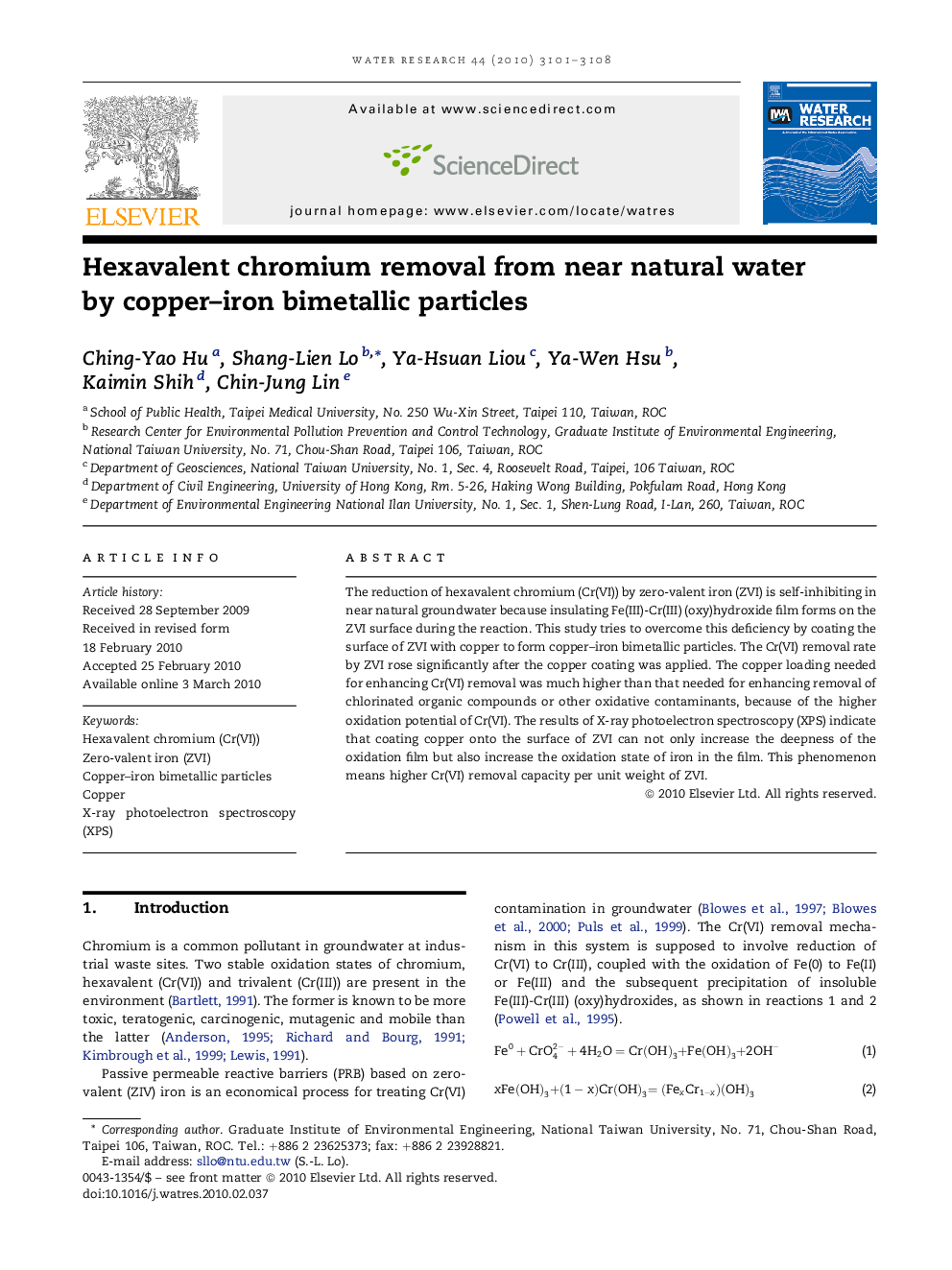| Article ID | Journal | Published Year | Pages | File Type |
|---|---|---|---|---|
| 4485083 | Water Research | 2010 | 8 Pages |
The reduction of hexavalent chromium (Cr(VI)) by zero-valent iron (ZVI) is self-inhibiting in near natural groundwater because insulating Fe(III)-Cr(III) (oxy)hydroxide film forms on the ZVI surface during the reaction. This study tries to overcome this deficiency by coating the surface of ZVI with copper to form copper–iron bimetallic particles. The Cr(VI) removal rate by ZVI rose significantly after the copper coating was applied. The copper loading needed for enhancing Cr(VI) removal was much higher than that needed for enhancing removal of chlorinated organic compounds or other oxidative contaminants, because of the higher oxidation potential of Cr(VI). The results of X-ray photoelectron spectroscopy (XPS) indicate that coating copper onto the surface of ZVI can not only increase the deepness of the oxidation film but also increase the oxidation state of iron in the film. This phenomenon means higher Cr(VI) removal capacity per unit weight of ZVI.
